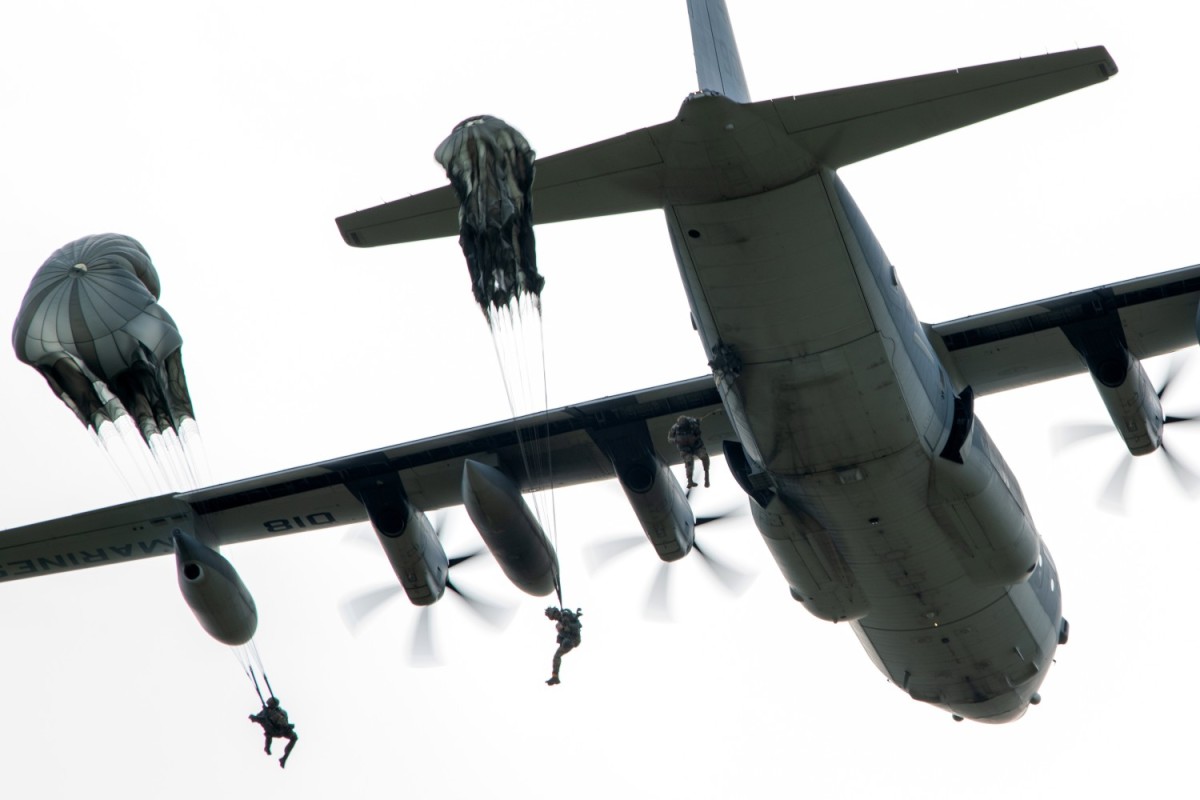With Donald Trump regaining the Presidency and all set to assume the role of the Commander-in-Chief of the U.S. armed forces on January 20, 2025, Pentagon officials are reportedly holding informal discussions about how the Department of Defense (DoD) will function under him, given the “troubled” relationship he had with the senior military leadership during his first term between 2016 and 2020.
Apparently, Trump had problems with now-retired Gen. Mark Milley, the then chairman of the Joint Chiefs of Staff, on the issue of the use of nuclear weapons.
The military elites had also not taken kindly to the possibility of President Trump using troops to quell domestic law and order challenges if necessary.
It may be noted that in the summer of 2020, during the height of mass racial justice protests (“Black Lives Matter” ) over the murder of the drug addict George Floyd in Police custody, Trump considered deploying active-duty troops against protesters. However, that was opposed by Pentagon officials, including then-defensive secretary Mark Esper, whom Trump later fired.
Today, Trump may not believe in using the military domestically to the same extent. However, analysts still ponder over his electoral promise of not hesitating to use the military to help carry out his plan for deporting tens of millions of undocumented immigrants living in the U.S.

Trump is equally opposed to the so-called “woke” policies in the military, such as those aimed at making the military more welcoming to minorities, LGBTQ+ people, and women.
In fact, during the electioneering, his Republican colleagues had promised that they would “get woke Left-wing Democrats fired” from the military “as soon as possible” if they won the election.
At an election rally, Trump himself had supported the idea of rooting out “woke” generals and policies when asked about the Biden Administration firing former Space Force officer Matthew Lohmeier because he had claimed on a podcast that Marxist ideologies were infiltrating the military. Trump has also talked about fighting “the enemy within” the military.
Not long ago, the EurAsian Times pointed out why many “veterans” had pledged to support Kamala Harris, not Trump, as the presidential candidate. This was notwithstanding Trump’s significant contribution during his presidency to strengthening the American military.
It was Trump who had worked for robust modernization of the U.S. strategic nuclear forces and the nuclear command-and-control system for the first time since the end of the Cold War.
It was Trump who upgraded the U.S. Cyber Defenses by elevating the Cyber Command into a major war-fighting command and reducing burdensome procedural restrictions on cyber operations.
It was Trump who had allowed over $2.2 trillion in defense spending for military modernization.
It was Trump who had empowered America’s defense industrial base, directing the first government assessment of the country’s manufacturing and defense supply chains since the 1950s.
And it was Trump who had secured three pay raises for U.S. military personnel and their families, the largest pay rise for the troops in a decade.
Going by Trump’s record as President and his speeches on various occasions during the recent electioneering as a Presidential candidate, it is likely, and this may gladden the hearts of the military elites, that his incoming administration will raise defense spending and enhance deterrence.
As Nadia Schadlow, a Senior Fellow at the Hudson Institute, who served as U.S. Deputy National Security Adviser for Strategy under President Trump last time, argues, “Strengthening the United States military position is key to an overmatch strategy since military power is what undergirds and secures the country’s economic and political advantages. The country’s future prosperity would be undercut if its adversaries achieved primacy or if a global conflict broke out.

“Today, U.S. military power has declined relative to other powers; a recent bipartisan report notes that the Chinese People’s Liberation Army is on a path to becoming ‘a peer, if not superior, military competitor of the United States.’ To reverse this trend, Washington needs to develop sufficient capabilities to deter acts of aggression that threaten its other interests. This means that the United States must have the ability—and credibly, signal its willingness if need be—to wage sustained military campaigns in multiple theaters”
In its report published in July, the U.S. Commission on the National Defense Strategy stated that “without significant change by the United States, the balance of power will continue to shift in China’s favor.” China’s overall annual spending on defense is estimated at as much as $711 billion, and the Chinese government announced an increase in annual defense spending of 7.2 percent in March 2024.
“Russia will devote 29 percent of its federal budget this year to national defense as it continues to reconstitute its military and economy after its failed initial invasion of Ukraine in 2022. Russia possesses considerable strategic, space, and cyber capabilities and under Vladimir Putin seeks a return to its global leadership role of the Cold War”.
The Commission found that DoD’s business practices, byzantine research and development (R&D) and procurement systems, reliance on decades-old military hardware, and culture of risk were no longer suited to today’s strategic environment.
In its opinion, the U.S. military lacks both the capabilities and the capacity required to be confident that it can deter and prevail in combat. It also concluded that the U.S. defense industrial base (DIB) cannot meet the equipment, technology, and munitions needs of the United States and its allies and partners.
The Commission argued that if DoD spending ranged from 4.9 percent to 16.9 percent of the GDP during the Cold War, including the Korean and Vietnam Wars, the same should be the case now.
The Commission made the following resource recommendations for DoD and Congress:
• DoD should immediately review all major systems against likely future needs, emphasizing battlefield utility and prioritizing agility, interoperability, and survivability. The Office of the Secretary of Defense and the Joint Staff should be more empowered to cancel programs, determine needs for the future, and invest accordingly. DoD should invest more in cyber, space, and software, which have enabled warfighting for decades but are now central to conflict and have a global reach.
• Congress should pass a supplemental appropriation immediately to begin a multi-year investment in the national security innovation and industrial base. Funding should support U.S. allies at war; expand industrial capacity, including infrastructure for shipbuilding and the ability to surge munitions production; increase and accelerate military construction to expand and harden facilities in Asia; secure access to critical minerals; and invest in a digital and industrial workforce.

• DoD should immediately begin making structural changes and prioritization adjustments to spend national security funds more effectively and more efficiently. DoD should address its recruitment challenges, rewrite regulations to speed defense procurement (and address cultural impediments and risk aversion), and shift the R&D paradigm to adopt technological innovation from outside the department for warfighting purposes.
• Congress should revoke or override the caps in the 2023 Fiscal Responsibility Act that serve as the basis for the FY 2025 budget request.
– For FY 2025, real growth in defense and non-defense national security spending is needed and, at a bare minimum, should fall within the range recommended by the 2018 NDS Commission.
– Given the severity of the threats, the FY 2027 and later budgets for all elements of national power will require spending that puts defense and other components of national security on a glide path to support efforts commensurate with the U.S. national effort seen during the Cold War.
– Larger amounts of defense spending should be accompanied by sufficient resources to build capacity at the Departments of State, Commerce, and Treasury; intelligence, trade, and investment agencies; the U.S. Agency for International Development; and the Department of Homeland Security and focus these organizations on national security missions. The United States should continue to support its allies, which it relies on to fight with (or for) it.
– The ballooning U.S. deficit also poses national security risks. Therefore, increased security spending should be accompanied by additional taxes and reforms to entitlement spending.
The U.S. Congress has already recognized the deficiency of U.S. defense spending, with legislators from both parties voting to add $28 billion to the president’s first defense budget in 2022 and $45 billion to his second in 2023. They will likely add between $21.5 billion and $37.4 billion to Biden’s final budget submission, which is now pending.
“But this is still not enough. The United States currently commits roughly the equivalent of three percent of GDP to defense, which is a historic low”, argues Kori Schake, Director of Foreign and Defense Policy Studies at the American Enterprise Institute, who also served in the National Security Council and the U.S. State Department under President George W. Bush.
With such forceful suggestions from those who occupied important positions in previous Republican Administrations and Trump’s vow of MAGA (Make America Great Again), it is safe to assume that his return to the White House will lead to major defense policy changes and budget shifts.
- Author and veteran journalist Prakash Nanda is Chairman of the Editorial Board of the EurAsian Times and has been commenting on politics, foreign policy, and strategic affairs for nearly three decades. He is a former National Fellow of the Indian Council for Historical Research and a recipient of the Seoul Peace Prize Scholarship.
- VIEWS PERSONAL OF THE AUTHOR
- CONTACT: prakash.nanda (at) hotmail.com
- Follow EurAsian Times on Google News




